
How to Use 3.7v LiPo 2200 mAh: Examples, Pinouts, and Specs
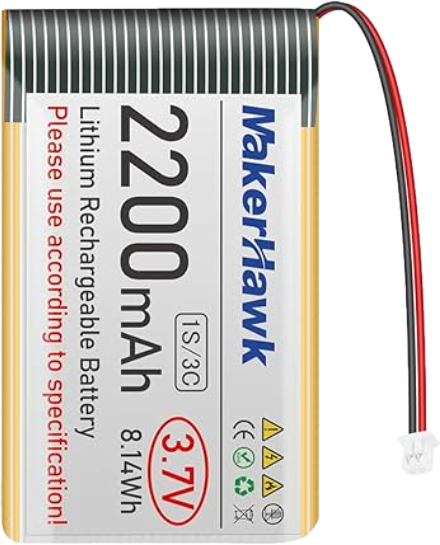
 Design with 3.7v LiPo 2200 mAh in Cirkit Designer
Design with 3.7v LiPo 2200 mAh in Cirkit DesignerIntroduction
The MakerHawk Rechargeable LiPo Battery is a lightweight and high-capacity lithium polymer (LiPo) battery with a nominal voltage of 3.7V and a capacity of 2200 mAh. This battery is widely used in portable electronics, remote-controlled (RC) devices, IoT projects, and other applications requiring a compact, rechargeable power source. Its high energy density and stable discharge characteristics make it an excellent choice for powering small to medium-sized electronic devices.
Explore Projects Built with 3.7v LiPo 2200 mAh
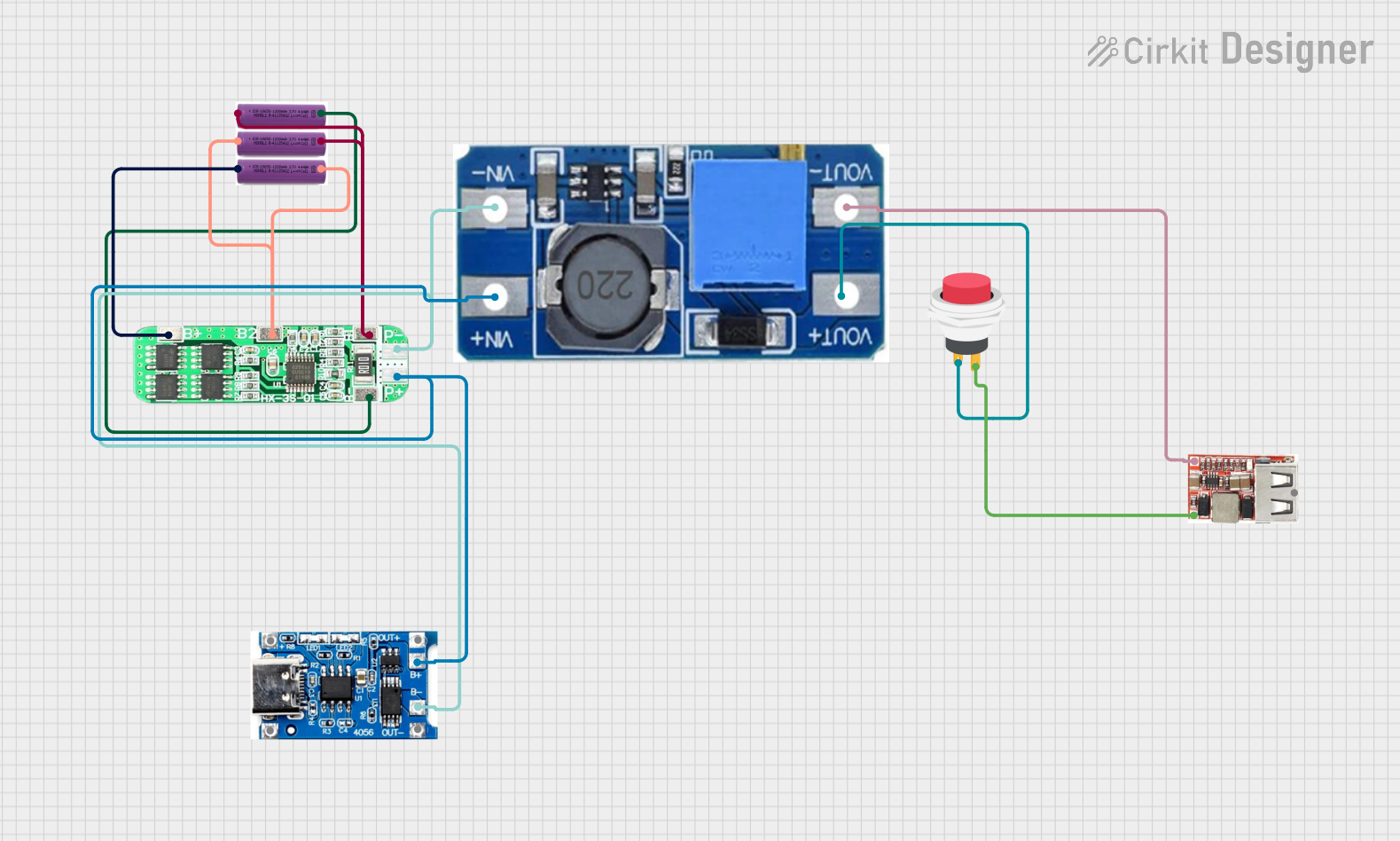
 Open Project in Cirkit Designer
Open Project in Cirkit Designer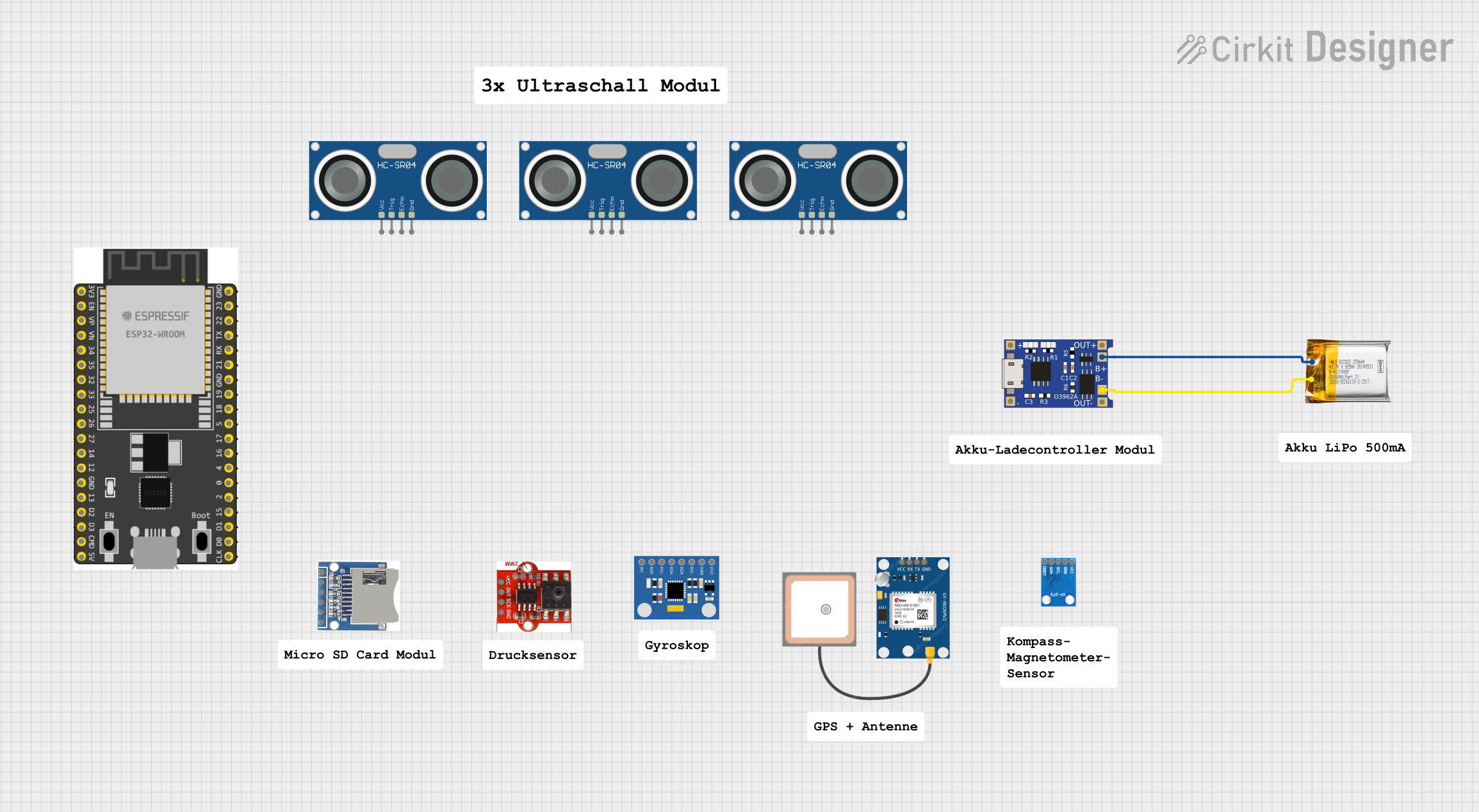
 Open Project in Cirkit Designer
Open Project in Cirkit Designer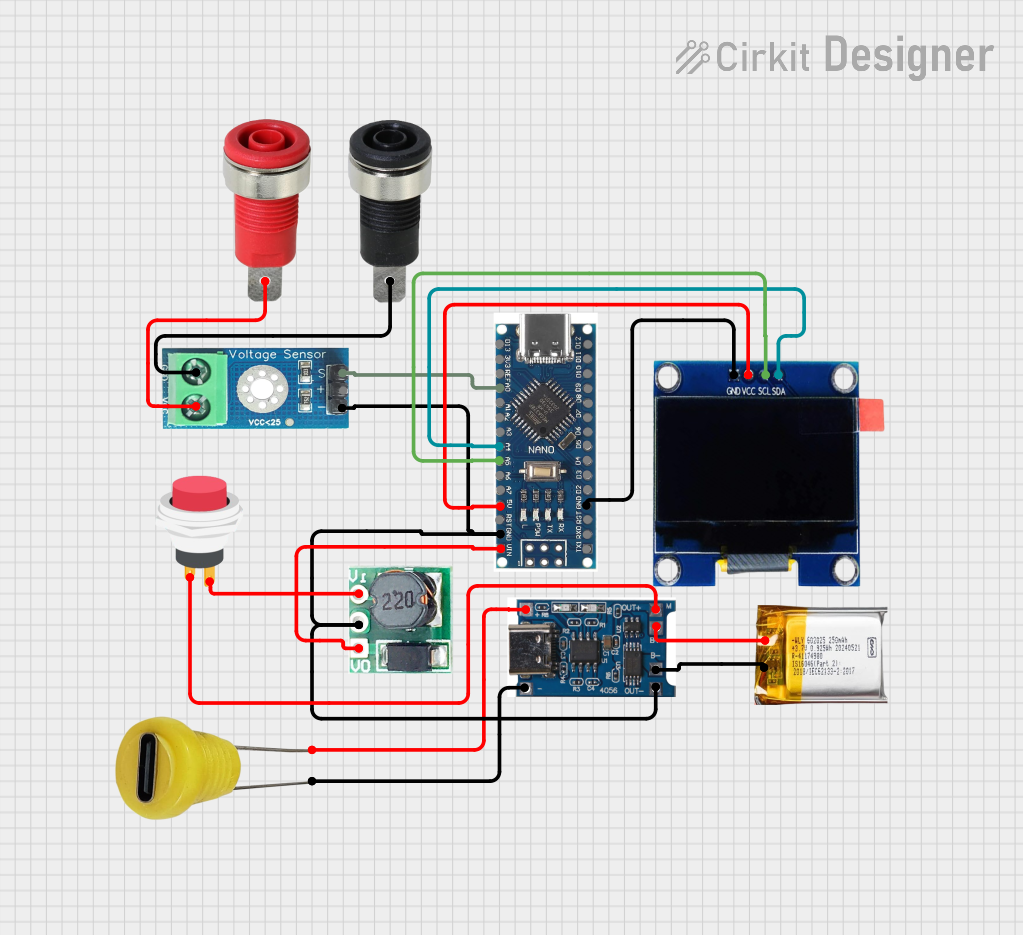
 Open Project in Cirkit Designer
Open Project in Cirkit Designer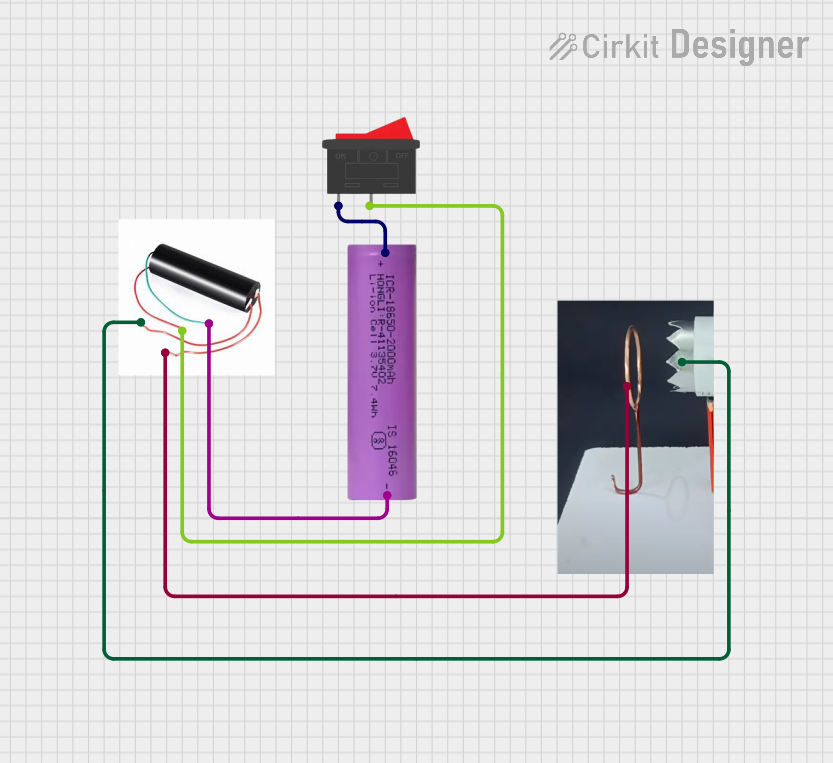
 Open Project in Cirkit Designer
Open Project in Cirkit DesignerExplore Projects Built with 3.7v LiPo 2200 mAh

 Open Project in Cirkit Designer
Open Project in Cirkit Designer
 Open Project in Cirkit Designer
Open Project in Cirkit Designer
 Open Project in Cirkit Designer
Open Project in Cirkit Designer
 Open Project in Cirkit Designer
Open Project in Cirkit DesignerCommon Applications
- RC vehicles (drones, cars, boats, etc.)
- Wearable devices
- Portable electronics (e.g., handheld gaming consoles, cameras)
- DIY electronics and IoT projects
- Backup power for microcontroller-based systems (e.g., Arduino, Raspberry Pi)
Technical Specifications
Key Specifications
| Parameter | Value |
|---|---|
| Manufacturer | MakerHawk |
| Part ID | Rechargeable LiPo Battery |
| Nominal Voltage | 3.7V |
| Capacity | 2200 mAh |
| Maximum Discharge Current | 2C (4.4A) |
| Charging Voltage | 4.2V (max) |
| Charging Current | 0.5C (1.1A recommended) |
| Connector Type | JST-XH 2-pin |
| Dimensions | 60mm x 34mm x 8mm |
| Weight | ~45g |
Pin Configuration
The battery is equipped with a JST-XH 2-pin connector. Below is the pinout description:
| Pin Number | Pin Name | Description |
|---|---|---|
| 1 | Positive (+) | Connects to the positive terminal of the circuit |
| 2 | Negative (-) | Connects to the ground (GND) of the circuit |
Usage Instructions
How to Use the 3.7V LiPo Battery in a Circuit
Connection:
- Connect the positive (+) pin of the battery to the positive power rail of your circuit.
- Connect the negative (-) pin to the ground (GND) of your circuit.
- Ensure the connector is securely attached to avoid loose connections.
Charging:
- Use a LiPo-compatible charger with a constant current/constant voltage (CC/CV) charging profile.
- Set the charging voltage to 4.2V and the charging current to 1.1A (recommended).
- Avoid overcharging or discharging below 3.0V, as this can damage the battery.
Discharge:
- Do not exceed the maximum discharge current of 4.4A.
- Monitor the battery voltage during use to prevent over-discharge. Use a battery management system (BMS) or low-voltage cutoff circuit for safety.
Mounting:
- Secure the battery in your project using a battery holder or adhesive tape to prevent movement or damage.
Important Considerations and Best Practices
- Safety: Never puncture, short-circuit, or expose the battery to fire or water.
- Storage: Store the battery at room temperature, ideally at 40-60% charge, to prolong its lifespan.
- Balancing: If using multiple batteries in series, ensure they are balanced to avoid uneven charging/discharging.
- Protection Circuit: Use a protection circuit module (PCM) to safeguard against overcharging, over-discharging, and short circuits.
Example: Using the Battery with an Arduino UNO
Below is an example of connecting the 3.7V LiPo battery to an Arduino UNO using a step-up converter to provide 5V:
Circuit Diagram
- Connect the battery's positive terminal to the input of a step-up converter.
- Connect the step-up converter's output to the Arduino's 5V and GND pins.
Sample Code
// Example code to read battery voltage using an analog pin on Arduino UNO
// Assumes a voltage divider circuit is used to scale down the battery voltage
const int batteryPin = A0; // Analog pin connected to the voltage divider
const float voltageDividerRatio = 2.0; // Adjust based on your resistor values
const float referenceVoltage = 5.0; // Arduino UNO's reference voltage
void setup() {
Serial.begin(9600); // Initialize serial communication
}
void loop() {
int rawValue = analogRead(batteryPin); // Read the analog value
float batteryVoltage = (rawValue / 1023.0) * referenceVoltage * voltageDividerRatio;
// Print the battery voltage to the Serial Monitor
Serial.print("Battery Voltage: ");
Serial.print(batteryVoltage);
Serial.println(" V");
delay(1000); // Wait for 1 second before the next reading
}
Troubleshooting and FAQs
Common Issues and Solutions
| Issue | Possible Cause | Solution |
|---|---|---|
| Battery not charging | Faulty charger or incorrect settings | Verify charger settings and connections |
| Battery overheating during use | Exceeding maximum discharge current | Reduce load or use a higher-capacity battery |
| Low runtime | Over-discharge or aging battery | Avoid over-discharging; replace if needed |
| Arduino resets unexpectedly | Insufficient voltage or current supply | Use a step-up converter or larger battery |
FAQs
Can I use this battery directly with a 5V device?
- No, the battery's nominal voltage is 3.7V. Use a step-up converter to boost the voltage to 5V.
How do I know when the battery is fully charged?
- The battery is fully charged when the charger indicates 4.2V on the output.
What happens if I over-discharge the battery?
- Over-discharging can permanently damage the battery. Use a low-voltage cutoff circuit to prevent this.
Can I connect multiple batteries in series or parallel?
- Yes, but ensure proper balancing and use a BMS to manage the pack safely.
By following these guidelines, you can safely and effectively use the MakerHawk 3.7V LiPo 2200 mAh battery in your projects.